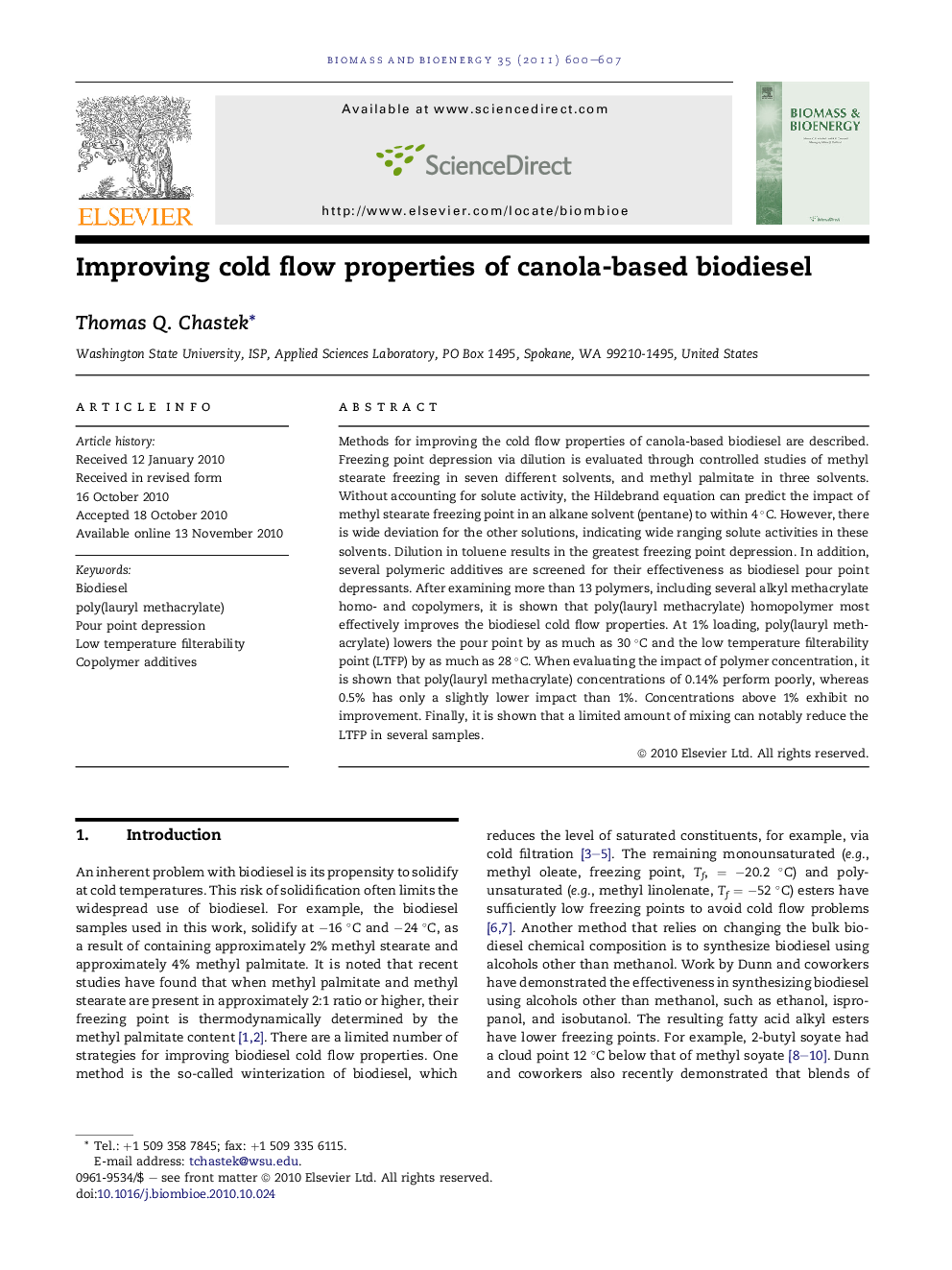| Article ID | Journal | Published Year | Pages | File Type |
|---|---|---|---|---|
| 678118 | Biomass and Bioenergy | 2011 | 8 Pages |
Abstract
Methods for improving the cold flow properties of canola-based biodiesel are described. Freezing point depression via dilution is evaluated through controlled studies of methyl stearate freezing in seven different solvents, and methyl palmitate in three solvents. Without accounting for solute activity, the Hildebrand equation can predict the impact of methyl stearate freezing point in an alkane solvent (pentane) to within 4 °C. However, there is wide deviation for the other solutions, indicating wide ranging solute activities in these solvents. Dilution in toluene results in the greatest freezing point depression. In addition, several polymeric additives are screened for their effectiveness as biodiesel pour point depressants. After examining more than 13 polymers, including several alkyl methacrylate homo- and copolymers, it is shown that poly(lauryl methacrylate) homopolymer most effectively improves the biodiesel cold flow properties. At 1% loading, poly(lauryl methacrylate) lowers the pour point by as much as 30 °C and the low temperature filterability point (LTFP) by as much as 28 °C. When evaluating the impact of polymer concentration, it is shown that poly(lauryl methacrylate) concentrations of 0.14% perform poorly, whereas 0.5% has only a slightly lower impact than 1%. Concentrations above 1% exhibit no improvement. Finally, it is shown that a limited amount of mixing can notably reduce the LTFP in several samples.
Keywords
Related Topics
Physical Sciences and Engineering
Chemical Engineering
Process Chemistry and Technology
Authors
Thomas Q. Chastek,
